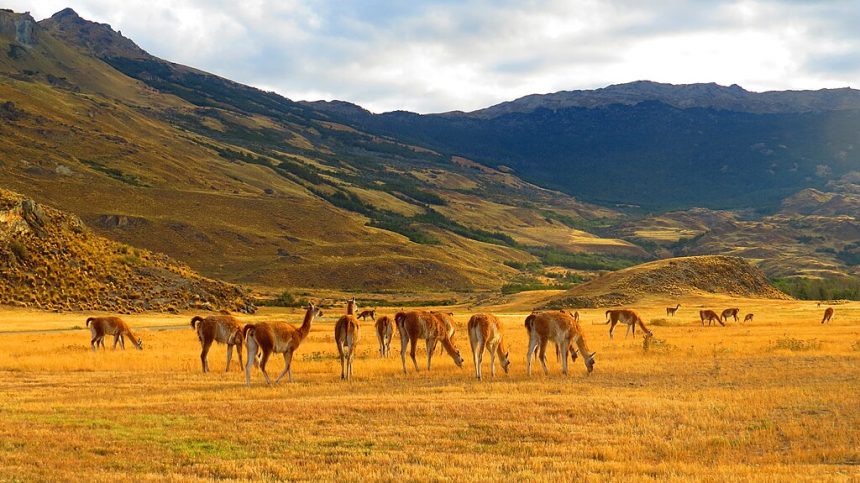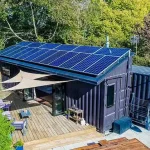Guanacos are a close relative of llamas, alpacas and vicuñas, with pointy ears and pale brown fur. This wild camelid species, found in Argentina, Peru, Bolivia and Chile, is a cornerstone of Patagonia’s ecosystem as one of the only large, native herbivores in the region. They once roamed freely throughout Patagonia, numbering up to 50 million and serving as prey for many endemic predators. But due to competition with livestock and over-hunting, their estimated population is now around 2 million. Guanacos are charismatic megafauna, large and attractive animals that conservation groups use to garner support and funding.
In Argentina, some have sought to reintroduce guanacos into regions of the country where they had all but disappeared. Organizations are choosing wildlife translocation (the practice of moving a free-ranging group of animals from one location to another) over the slower and less certain process of rebuilding existing populations. In 2018, the NGO Fundación Rewilding Argentina (FRA) released plans to transfer a group of guanacos from Parque Patagonia, a glaciated national park in the Santa Cruz province of southern Argentina, to the Luro Provincial Park, a reserve in La Pampa, 1500 kilometers (932 miles) north.
The group’s name indicates their allegiance to rewilding, a framework for translocation that focuses on the restoration of earlier, more pristine ecosystems that are presumed to have a capacity to adapt and self-regulate. The new park is characterized by dry forest vegetation, savannas and a variable but generally warmer climate. Supporters of these plans say they could help restore the guanaco to landscapes where it had once thrived. They hope that it will open the door to additional translocations further north in El Impenetrable National Park, a subtropical region with forests and wetlands.
Though small guanaco populations survive in La Pampa, guanacos are “critically endangered” in the region. Santa Cruz, on the other hand, harbors an abundant guanaco population, with an estimated 1.1 million animals in 2015. In June 2023, some Santa Cruz cattle ranchers even complained of a guanaco overpopulation problem. The governments of Santa Cruz and La Pampa partnered to enact the guanaco translocation plan, which was approved by the Argentinian Ministry of Environment and Sustainable Development, to be facilitated by FRA.
According to Ulises Balza, lead author of the letter, the benefits and risks of any animal translocation process must be discussed on a case-by-case basis. “Here, there was no such discussion,” wrote Balza in an email to GlacierHub. Balza pointed out that FRA highlighted only the potential benefits of translocating the guanacos, while the genetic risks were “completely ignored.”
Viorel Popescu, an associate research scientist in Columbia University’s Department of Ecology, Evolution and Environmental Biology, told GlacierHub that inadvisable conservation decisions are not uncommon. Popescu explained that successful cases of rewilding typically involve scientific backing and public outreach, but that many unsuccessful projects do not consider either the impact of the translocated animals on the recipient ecosystem or the effect of the novel environment on the translocated species’ ecology and behavior.
As climate change threatens biodiversity, guanaco populations in cooler regions, such as glacier-filled Patagonia, may be seen as replacements to losses elsewhere—but as this case shows, such solutions are complex, and there is no silver bullet for species restoration. Future rewilding decisions will require careful research, preparation and consultation of local communities to avoid similar controversies in the future.






